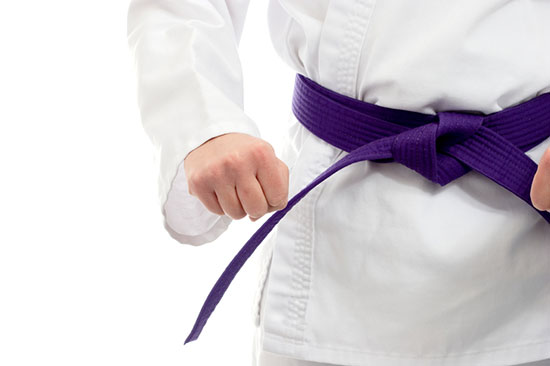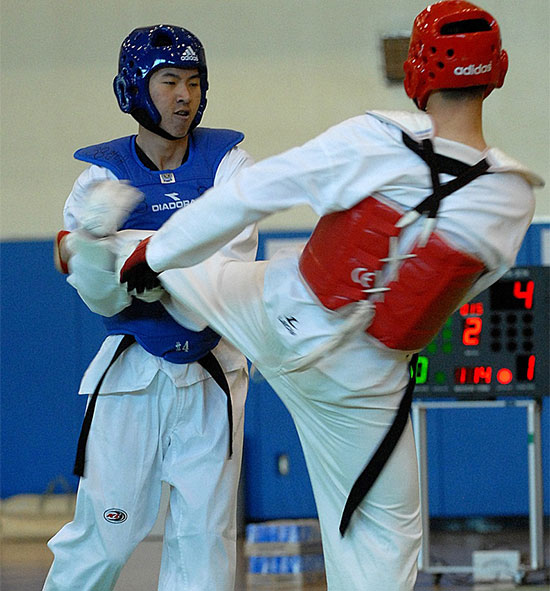If you are or want to be a Taekwondo student, you may have heard of ATA Taekwondo. One of the biggest martial arts associations in the world is the ATA, or American Taekwondo Association.
Their system of belt rankings serves as a gauge for students’ advancement and level of proficiency in the Taekwondo martial art.
The significance of the ATA Taekwondo belt system and the requirements for each belt rank will be discussed in more detail in this article.
Contents
The ATA Taekwondo Belt Order
There are a total of 18 belt ranks in ATA Taekwondo, and each rank represents a student’s degree of Taekwondo proficiency.
The “Dan” level is represented by the final nine belts, while the “Gup” level is represented by the first nine belts. With white being the lowest belt and black being the highest, the color of the belt changes as the learner rises through the levels.
Here are the ATA Taekwondo Belt Ranks in order of ascending proficiency:
- White Belt
- Orange Belt
- Yellow Belt
- Camo Belt
- Green Belt
- Purple Belt
- Blue Belt
- Brown Belt
- Red Belt
- Pre Black Belt
- 1st Degree Black Belt
- 2nd Degree Black Belt
- 3rd Degree Black Belt
- 4th Degree Black Belt
- 5th Degree Black Belt
- 6th Degree Black Belt
- 7th Degree Black Belt
- 8th Degree Black Belt
What Does Each Belt Position Mean?
Each ATA Taekwondo belt rank represents a student’s level of Taekwondo expertise. The meanings behind each belt are briefly described as follows:
White Belt
The beginner rank in taekwondo is called the white belt. It marks the start of their journey through the Taekwondo art.
Orange Belt
The orange belt is a symbol of the student’s advancement in martial art and reflects their expanding comprehension of Taekwondo’s fundamentals.
Yellow Belt
The sun and the student’s developing knowledge of Taekwondo’s principles and methods are represented by the yellow belt.
Camo Belt
The camouflage belt symbolizes the student’s development in taekwondo, similar to how a seed sprouts from the earth and develops into a plant.
Green Belt
The green belt represents, like the growth of a plant, the development of the student’s taekwondo abilities.
Purple Belt
The purple belt symbolizes the student’s expanding comprehension of Taekwondo concepts and moves.
Blue Belt
The blue belt means the student’s growing confidence and their ability to execute Taekwondo techniques with precision.
Brown Belt
The brown belt represents the student’s growth and proficiency in Taekwondo, and the development of their physical and mental discipline.
Red Belt
The red belt, the last rank before the black belt, denotes a student’s proficiency in Taekwondo’s fundamental concepts and moves.
Pre Black Belt
The student’s readiness for the black belt test is indicated by a pre-black belt level.
Black Belt
The black belt, the top rank in ATA Taekwondo, denotes a student’s proficiency in Taekwondo’s concepts and methods.
It is crucial to understand that earning a black belt marks the start of a new stage in a student’s development as a martial artist rather than the conclusion of their Taekwondo journey.
How Do You Get to Each Belt Rank?
Each ATA Taekwondo belt rank demands that the student show mastery of particular forms, techniques, and sparring.
The student must practice diligently, attend courses, and train regularly to get each belt rank. Each belt rank has certain requirements, and in order to progress to the next one, the learner must pass a test.
A licensed ATA instructor typically administers the test, and the pupil is judged on their aptitude for techniques, forms, sparring, and attitude.
It is significant to emphasize that each student advances at their own rate; moving up the belt rankings is not a competition.
Continuous improvement should be prioritized over simply obtaining a given rank. To rise through the ranks, one must work diligently and with discipline, but the benefits are worthwhile.
The ATA Taekwondo Belt Order: Why is it Important?
There are various reasons why the ATA Taekwondo belt order system is important. First off, it offers a methodical means to gauge a student’s improvement and degree of Taekwondo proficiency.
It supports the student in setting objectives and pursuing them. Second, it fosters the student’s confidence and sense of accomplishment.
Every time a pupil achieves a new belt rank, they feel proud of themselves. Lastly, it gives teachers a framework for assessing and directing students’ progress.
The belt rank system makes sure the pupil is moving forward at an appropriate rate and gives the means to see where they need to develop.
Conclusion
Training in Taekwondo is not complete without using the ATA belt order system. It offers a methodical technique to gauge a student’s development and ability level, fosters confidence and a sense of accomplishment, and offers a framework for teachers to assess and direct the student’s progress.
It takes effort, commitment, and discipline to go up the belt ranks, but the benefits are worthwhile. The student’s belt level is not the final destination; rather, it is a reflection of their journey and development in the Taekwondo discipline.
FAQs
How much time is required to climb the ATA Taekwondo belt ranks?
Every student progresses through the ATA Taekwondo belt ranks at a different rate. It depends on the student’s commitment, training frequency, and capacity for understanding and using new information.
Is it required to participate in tournaments to climb the levels of the belt?
The ATA Taekwondo belt rankings can be attained without taking part in competitions. It is, however, a fantastic chance to compare your abilities to those of other martial artists and gather useful experience.
What takes place if a learner doesn’t pass the belt rank test?
A pupil can retake the belt rank test if they fail it after a set amount of time. In areas that require development, the instructor will give feedback and direction.
Is it possible to skip a belt rank?
It is uncommon in the ATA Taekwondo system to skip a belt rank. Nonetheless, if the kid exhibits outstanding competency and skill level, it might be feasible.





